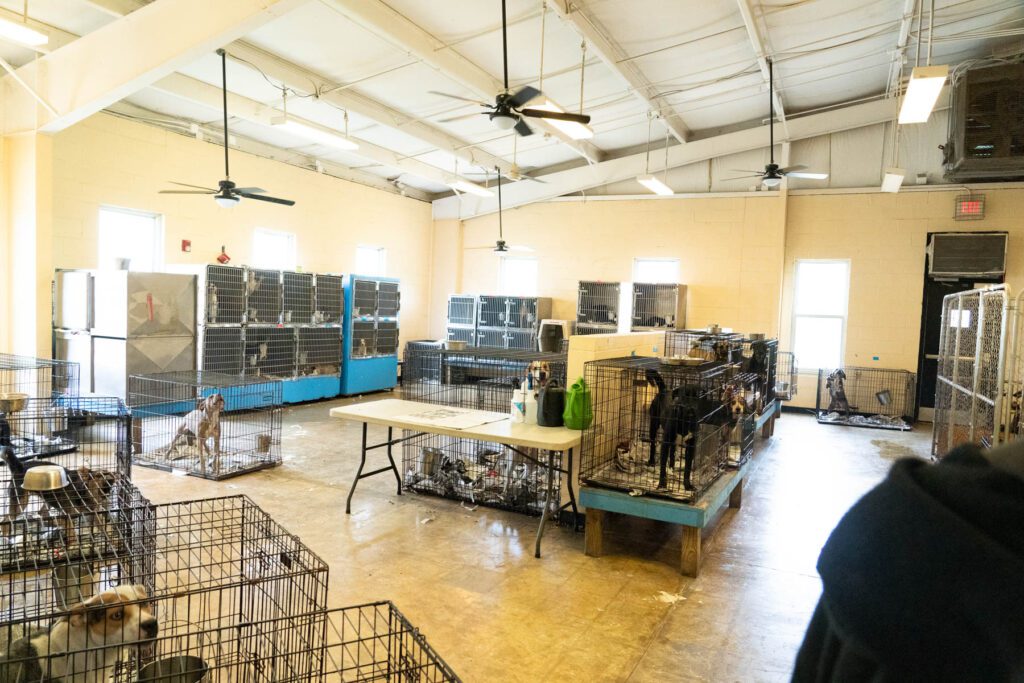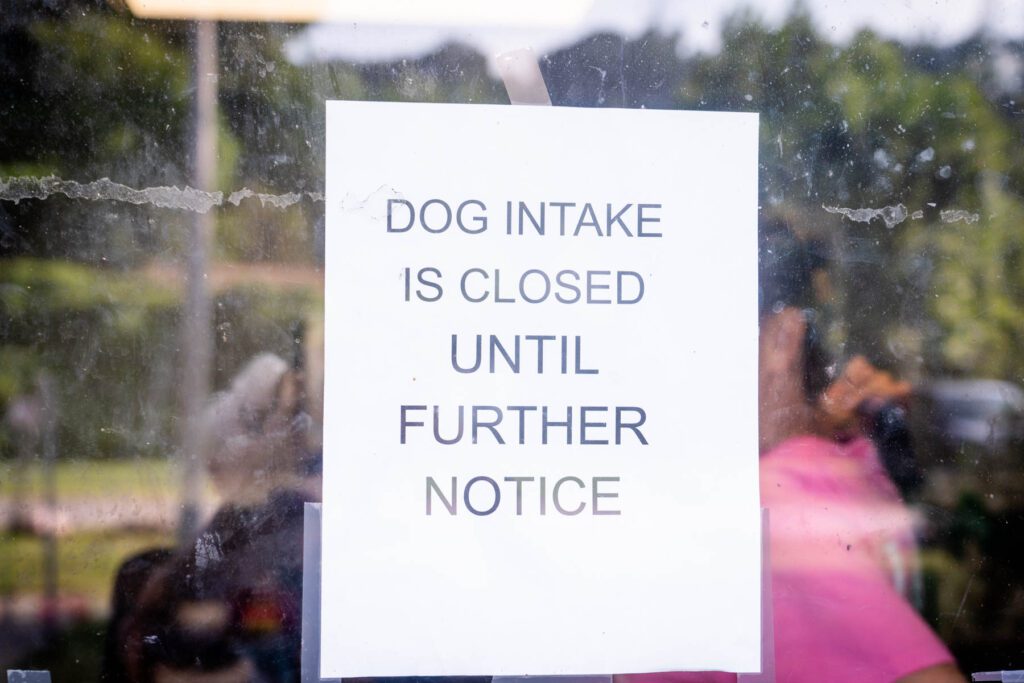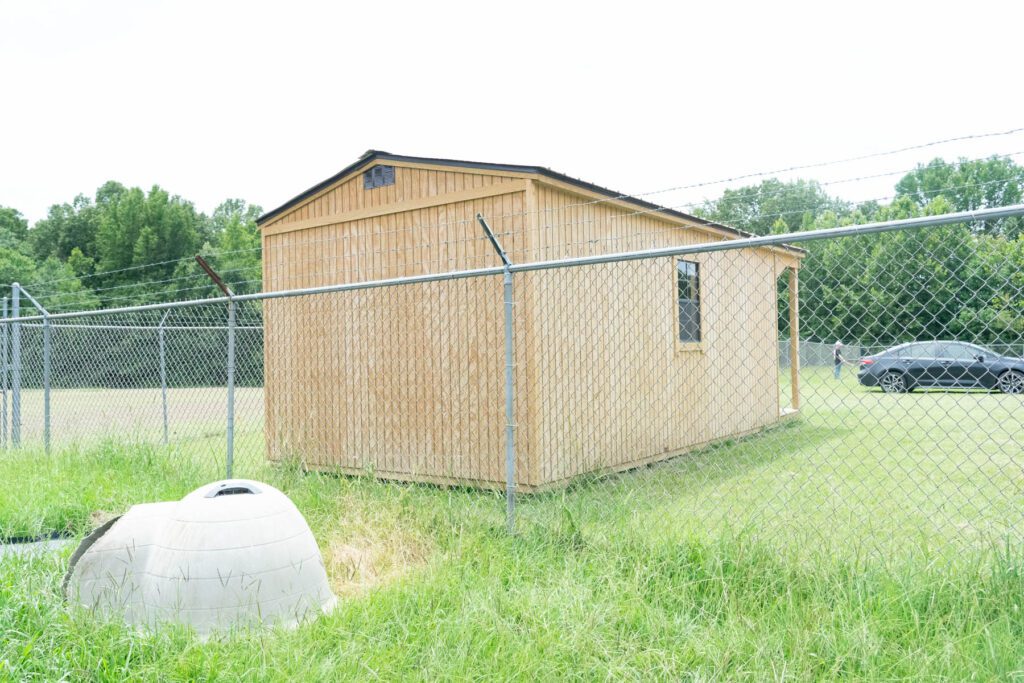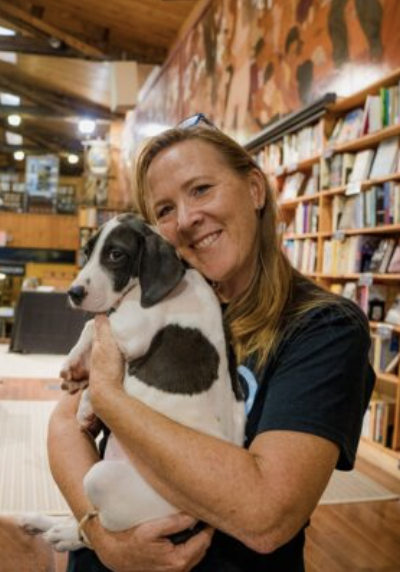Our most recent tour was more affirmation that the situation in our nation’s shelters is a crisis. There are simply too many dogs coming in and too few going out. The problem is evident all over the country, but like every other issue when it comes to animal sheltering, it is pronounced in the south.

The shelters are overcapacity. The rescues are full and not pulling. Adoptions have slowed to a trickle. Owner surrenders are up. Breeders (of all ilk) keep pumping out more puppies. And there is no relief in sight.
We keep trying to fix the problem with the same set of solutions we’ve been using for twenty years. What’s that they say about the definition of crazy? Doing the same thing over and over again and expecting a different outcome?
We need new solutions, novel ideas, fresh approaches, we’ve got to think more outside the box of we’ve-always-done-it-this-way. Lives depend on it.
The solution many shelters are embracing right now is to close to intake, and continue to beg rescues and bribe adopters with lower or no fees. That’s what we saw pretty much at every shelter we visited in the last year.

But what happens to the dogs that are turned away? Some will wind up at the shelter anyway, exacerbating the problem when their owners abandon them on a busy road or a deserted area. Some will suffer living in a home that does not want them or cannot care for them. Some will die in ways many would not deem inhumane.
The one solution I keep pitching everywhere is that we need more foster homes, and we do. Fosters would give shelters breathing room. Where else can we find available fosters? Perhaps prisons could foster dogs – the prison programs have been incredible success stories. What about group homes or nursing homes? I’ve long thought we need to partner with the military to find fosters – it’s a win-win for soldiers who can’t adopt because of the possibility of deployment.
Many shelters are doubling up dogs, creating spaces where there were none. Too many are resorting to keeping dogs in crates.





I have another idea – tiny shelters.
This idea started as a band-aid for the problem of no AC at the shelter in Corinth-Alcorn. Remember when I wrote about Operation Hot Dogs? We asked how we could help. We didn’t have 50K for an AC system, but we had some Instagrant money left and could pledge some of our shelter tour budget banking on our supporters to replenish that account (they did!).
We purchased a portable 12×24 shed for the shelter (which is a nonprofit) to use to house their most vulnerable animals. The shed would have AC and be able to hold 10-12 dogs.

But the more we discussed the details of creating what Charlotte called a Canine Condo, the more the idea grew in my heart. This could be, not just a band-aid, but a solution.
Tiny Shelters, much like Tiny houses, are small, less expensive, and completely customizable.
When it’s completed, the Tiny Shelter building we envisioned will be surrounded by a secure fence. It will be insulated, with a solid surface floor and walls, AC/heat, overhead fans, two doggie doors, a front porch and deck, plus a large enclosed yard.
Each dog would have its own crate to be closed into at night, but during the day they would hang out, come and go from the building, and play in the yard like dogs.
This will not only make them more adoptable (they’ll be crate-trained!), but also make cleaning easier for staff. Most dogs won’t poop/pee in their crates if they are only in there to sleep. My bet is that most of the dogs will also be housebroken by the time they are adopted. There is so much I love about this idea.
The dogs will be less stressed because they’ll be living in community, able to play and engage in natural dog behaviors. They can spend their days outside in the fresh air or hanging out in packs like we witnessed at Big Dog Ranch.



The dogs will be better prepared to live in a home setting. They will be more relaxed. Staff will be able to get better pictures and videos. Volunteers will enjoy hanging out with dogs much like they would at a friend’s house. Think cat café, but with dogs!
But more than that –
Tiny shelters can be put up quickly. They can house the overflow we are experiencing at the moment in a creative, sustainable, and inexpensive way. And when they are no longer needed, they can always be removed (even sold to recoup some of the initial cost). Kind of like the trailer classrooms used at overcrowded schools.
Sure, there will be details to work out (drainage, electric, security), but all of those are solvable problems. A Tiny Shelter can be customized to house a mama and litter. Another practice we saw at Big Dog Ranch.





They could be used to house cats (with an attached catio?!). You could install various sizes to hold smaller numbers of dogs, have quarantine shelters, and even set up individual Tiny Shelters for dogs who cannot handle communal living.
Creative individuals could design an entire campus of tiny shelters. How much fun would it be to visit a shelter like that, as opposed to the rows of cement bunkers and screaming dogs?
Fencing will likely be the biggest cost. I imagine an entire shelter property fenced for security purposes and the Tiny Shelter enclosures within that.
In Mississippi, we sponsored the first building, and it will have our logo on it. Tiny Shelters are a perfect donation platform – businesses and groups can sponsor them. Creative types could customize the look/décor of each shelter.



There are so many possibilities. As one director I recently spoke with about the idea, it’s a complete mindset change. From housing dogs indoors in isolated prisons, to housing them as a pack in a park.
If we are serious about solving the shelter crisis in this country, we should not be putting up more million-dollar buildings. Tiny Shelters can be a solution that is customizable, creative, inexpensive, temporary, and—most importantly—better for the animals.
Saving all the saveable animals in this present crisis will require innovative, creative, and courageous solutions. Tiny Shelters are one solution. I know there are others out there – I’d love to hear about them.
Let’s shift our focus from lamenting the problem to finding solutions. We’ve wasted enough energy blaming and shaming. Let’s fix this.

Until each one has a home,
Cara
If you want to learn more, be sure to subscribe to this blog. And help us spread the word by sharing this post with others. Visit our website to learn more.
You can also help raise awareness by following/commenting/sharing us on Facebook, Instagram, YouTube, Tik Tok, and the Who Will Let the Dogs Out podcast.

Learn more about what is happening in our southern shelters and rescues in the book, One Hundred Dogs & Counting: One Woman, Ten Thousand Miles, and a Journey Into the Heart of Shelters and Rescues (Pegasus Books, 2020). It’s the story of a challenging foster dog who inspired me to travel south to find out where all the dogs were coming from. It tells the story of how Who Will Let the Dogs Out began. Find it anywhere books are sold. A portion of the proceeds of every book sold go to help unwanted animals in the south. (One Hundred Dogs & Counting is the Kindle Deal of the month for August at just $1.99)
For more information on any of our projects, to talk about rescue in your neck of the woods, or become a WWLDO volunteer, please email whowillletthedogsout@gmail.com or carasueachterberg@gmail.com.
And for links to everything WWLDO check out our Linktree.



Mandy
Another (obvious) solution would be to spay/neuter. It’s a tough one in the South to get people to buy in to it. I think that would be the biggest challenge: promoting widespread acceptance and embracing of spay/neuter.